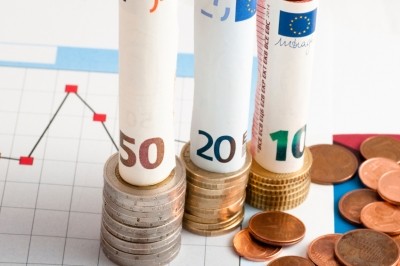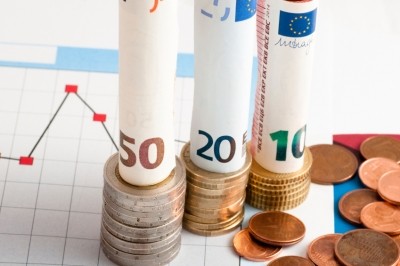Organic gross profit remains stable at ForFarmers despite revenue dip

The Dutch feed group reported that its gross profit was up 4.5% to €408.1 million compared to €390.4m in 2013 as a result of acquisitions and a positive currency effect of €6.9m.
“Despite the revenue decline, on a like for like basis, the margin was stable as a result of volume growth,” said Arnout Traas, chief financial officer (CFO) at ForFarmers.
In addition, he said the feed producer didn’t take the hit for the lower raw materials prices in 2014. “The price differential was passed on to customers. We can’t be held responsible for fluctuations in global corn and wheat prices,” said Traas.
The total feed volume for the group, which includes compound feed and other categories, jumped by 5% last year to 8.9m tons, with organic volume growth at 1.8%. The largest growth came from the pig sector, but the dairy and layers segments also contributed to the boost in organic volume, it added.
Weather didn’t favor UK volume performance
In terms of the different markets it operates in, all countries saw higher organic volumes, said the Dutch firm.
Total feed volume in the UK was up 8.3% at 2.9m tons, mainly on the back of the acquisitions of HST Feeds and Wheyfeed, reported the company. But, excluding those acquisitions, last year saw a decline of 1.7% in volumes in that market for ForFarmers.
The pig and poultry sector were buoyant and the cattle sector performed well for ForFarmers in the second half of the year, but this growth did not bring the sales volumes up to the levels recorded for the UK in the first half of 2013, the cold weather conditions back then being extremely favorable for ruminant feed sales, said Traas.
UK gross profit was €145.5m in 2014, slightly lower in organic terms on 2013, as a result of the previous year’s inclement weather. The dry, moist and liquid business (DML) also had a negative effect on gross profit in the UK. “We couldn’t pass on the lower prices in this segment due to the long term fixed price contracts we had with brewers and distillers on DML products,” said the CFO.
Dutch volumes up
In the Netherlands, the total feed volume increased by 1.4% to 3.9m tons in 2014.
This increase, said ForFarmers, was largely on the back of an increase in co-product sales. Compound feed sales declined slightly, by 2.1%. “This decline was in line with the decline in the market. Volumes were down in all sectors, except the broiler sector,” it reported.
Gross profit in this market was virtually unchanged in 2014, despite the sharp decline in revenue, at €180.4m.
The company said Reudink’s organic feeds contribution to gross profit was higher in 2014 than the previous year, with that growth partly due to extra sales volume as a result of the new strategic cooperation with Agrifirm Plant.
On top of this, the roughage crops and arable sectors had a good season and higher volumes, especially in the first half of 2014, made a positive contribution to gross profit in the Netherlands, said ForFarmers.
German pig and layer sectors prove buoyant
Feed volumes in Germany and Belgium were up by 7.5% to 2.1m tons, partly as a result of the increased focus on growth segments within the sectors, said the group.
“In Germany, the pig and layers sectors made a particularly strong contribution to higher sales. Sales in the cattle sector remained stable in a slightly lower market. Sales of single feeds also increased.
In Belgium, volumes were higher in 2014, largely due to an increase in the number of new clients in the pig and cattle sectors and the impact of synergies in the field of nutritional expertise. The Belgian poultry sector lagged slightly in relative terms,” reported the Dutch firm.
Gross profit in those markets increased to €82.2m in 2014. “This increase was largely due to higher sales and the improved utilization of nutritional expertise,” it added.
Increasing capital liquidity
ForFarmers is still majority owned by the original co-operative but today it announced its intentions to switch from the current external trading platform for certificates to the Euronext Amsterdam stock exchange in 2016, following the conclusion of an investigative study into the benefits of such a move for the group.
Traas said the switch to the public stock exchange is likely to take the form of a technical listing, which involves the conversion of the certificates into shares, with no issue of additional shares.
“The main purpose of the listing on the stock exchange is to increase the liquidity in the certificates and to attract institutional investors, who, currently, cannot trade on the external plaftorm. The transfer to the public market is not required to generate additional funding in the short run - the balance sheet of ForFarmers and the credit facilities are sufficient to enable the realization of the strategy Horizon 2020,” he told us.











